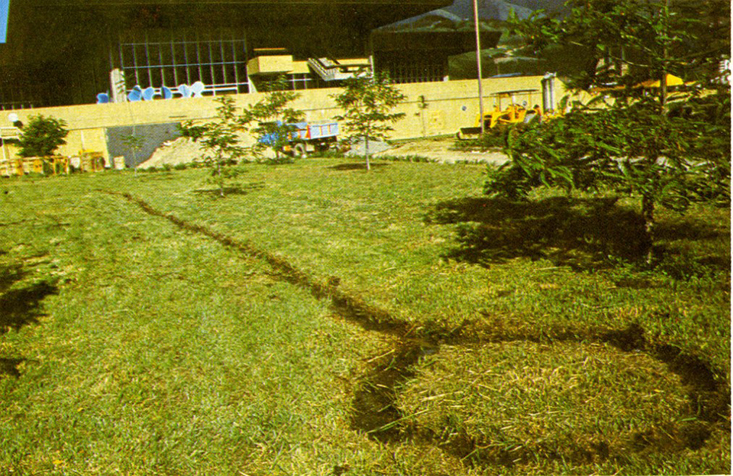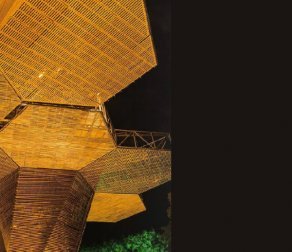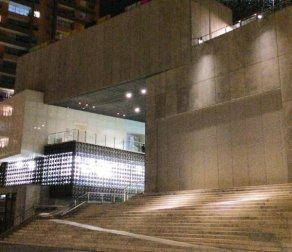The 1968, 1970, and 1972 Coltejer Art Biennials: Six Years of Cultural Revolution in Medellín, Colombia
In the late 1960s, Leonel Estrada led a small group of critics and other residents of Medellín in a bid to establish a dialogue between international art and local creativity. The group’s ideas found an ally in Rodrigo Uribe Echavarría, then the chairman of Medellín’s largest textile company, Coltejer, who was Leonel’s brother-in-law as well as an art lover. In 1968, Coltejer used the company’s sixtieth anniversary as a pretext for sponsoring the 1st Ibero-American Painting Biennial. Over the next few years, Medellín became a pioneering city in the diffusion of contemporary art. Its emblematic biennials of 1968, 1970, and 1972 brought a new debate to the region on the most advanced art of the time.
In retrospect, Leonel Estrada compares the Coltejer Art Biennials in Colombia with the Armory Show of February 1913 in New York, an art-historical landmark. “The Armory Show introduced modern European art to the United States, and pointed to a renewed spirit by bringing the new isms, like Symbolism, Fauvism, Cubism, and Futurism to people’s knowledge. In the same way, in Colombia, and especially in Medellín, the Coltejer Art Biennials led to a radical change in aesthetic sensibility and the appreciation of human creativity.”
The 1st Coltejer Painting Biennial was inaugurated on May 4, 1968, with the participation of sixty artists from Latin America. The works for display were selected by the cultural attachés of the guest nations, a decision that drew protests that the event was politicized. The list of artists included Argentine Sarah Grilo, Colombians Santiago Cárdenas and Bernardo Salcedo, and Peruvian Fernando Szyszlo, among others. Coltejar’s sponsorship included the award of cash prizes, and the firm acquired several of the works shown at the biennial. This was the start of one of Colombia’s oldest corporate collections, which remained active until the economic crisis of 1990. The jury, formed by Jean-Clarence Lambert, Alexandre Cirici Pellicer, and Dicken Castro, gave first place to The Chamber of Love (La cámara del amor), a large polyptych in oil by Luis Caballero in which the artist envisaged his work for the first time in terms of an intervention in space.
Those who were present at the first biennial say that it was hard for the local public, in a city accustomed to landscape and portrait painting, to understand the art on view. Examples were shown of conceptual art, geometric abstraction, graffiti, Pop art and environmental art. The 1st Coltejer Ibero-American Painting Biennial put Medellín on the international art map. In an interview, artist Carlos Rojas called the event “the best thing for Medellín since the Colony.”
The 2nd Coltejer Art Biennial, in 1970, was curated by Spaniard Vicente Aguilera Cerni, Englishman Lawrence Alloway, and Italian Giulio Carlo Argan. It brought together 123 artists from all over the world, a majority of which were Latin Americans. After the first event’s focus on painting, the second biennial expanded its scope to include the different artistic tendencies of the time. The role of the curators in this was crucial. Not only did they heed criticisms of the inaugural biennial, they also publicized the event internationally through articles and columns in specialized periodicals such as Art in America and Artforum. Among the selected artists were Luis Tomasello, winner of the event’s first prize with Chromoplastic Atmosphere (Atmósfera cromoplástica); Sergio Camargo, with one of his emblematic reliefs; and Lygia Clark, with a Bug (Bicho).
Some of the artworks caused controversy. One was a conceptual piece by Colombian artist Bernardo Salcedo titled 500 plastic bags full of dry hay. Numbered to make them easier to count. Piled up to make it easier for the public to circulate. Put there because they are. Because they’re there and nowhere else (500 sacos plásticos, llenos de heno seco. Numerados para facilitar su conteo. Apilados para facilitar la circulación del público. Puestos ahí porque sí. Porque ahí están y no en otra parte). Leonel Estrada relates that visitors found the work offensive, saying they could neither understand its aesthetic, nor appreciate any relationship between its form and its title. Even so, this biennial confirmed the impact, novelty, and breadth of the initiative. For the 1970 event, key figures in the New York art scene such as Barbara Duncan, a board member of the Metropolitan Museum, and Gene Baro, a critic for ARTNews and Art in America, ventured as far as Medellín.
The 3rd Coltejer Art Biennial, inaugurated in 1972, was curated by Jasia Reichardt from Poland, Gillo Dorfles from Italy, and Brian O’Doherty from the United States. The curators invited 220 artists, and were also in charge of selecting the works to be acquired by Coltejer for its collection. The list of artists included Gregorio Vardanega, Feliza Bursztyn, Antonio Caro, Julio Alpuy, Álvaro Barrio, Bernardo Salcedo, and Hans Haacke. The biennial thus allowed works by the contemporary avant-garde to be seen in Medellín. One of the great novelties was a project by Argentine Land Art pioneer Carlos Ginzburg, a member of the Grupo de los Trece (Group of Thirteen). In a performance titled The Artist: Artist Beggar (El artista: artista mendigo), Ginzburg also wandered around the biennial’s venue with a glass jar begging for money, and with posters stuck to his body questioning the role of art.
Sadly, the 1972 biennial was the last to be sponsored by Coltejer, a 1970s crisis in the textile industry forcing them to abandon the project. The city is still trying to reactivate it though various proposals and alliances. In 1981, with the support of a group of companies, the Medellín Chamber of Commerce managed to collect enough money to revive them with two parallel events: the 4th Biennial: Form, Inform and Recreate, under the direction of Leonel Estrada, and the Colloquium on Non-Objectual Art, organized by Colombian curator Alberto Sierra and Peruvian critic Juan Acha at the recently founded Museo de Arte Moderno in Medellín. Seen on that occasion in Medellín were works such as Highway for Ants (Autopista para hormigas) by Carl Andre, Revived Myth, Carlos Gardel (Mito revivido, Carlos Gardel) by Marta Minujín, and Silhouette (Silueta) by Ana Mendieta.
Brief and discontinuous though they were, the Coltejer Biennials led to a profound change in local aesthetic sensibility and gave Medellín an important place in art history. Current generations still aim to surpass the achievements of four decades ago. In 1997, the city sponsored the Medellín International Art Festival, which, for political and financial reasons, was never repeated. Ten years later, in 2007, the Museo de Antioquia revived the idea of the biennial with the so-called MDE, which occurs every four years if money and organization allow.
The biennials taught us a valuable lesson in the importance of generating dialogue with other regions at a national and international level. Even more importantly, they contributed to the consolidation of an art public, art critics, an art market, art collecting, and art education as a tool for closing the “circle” of art. The city and the country are gradually succeeding in confronting the challenge, and Colombia is once again a topic of conversation in art circles.
by: Alexa Halaby



